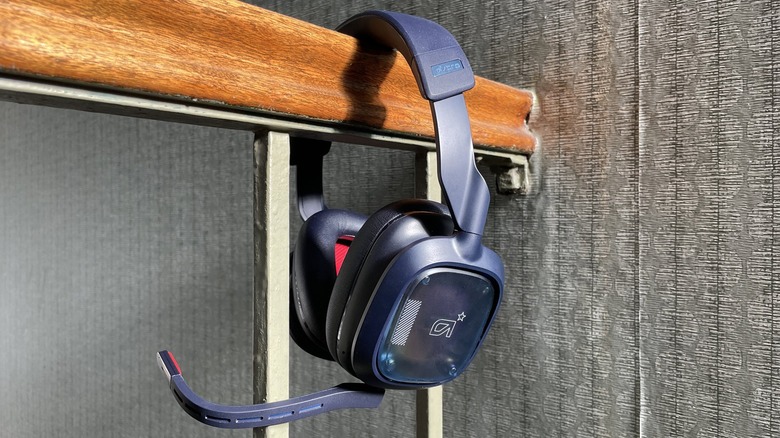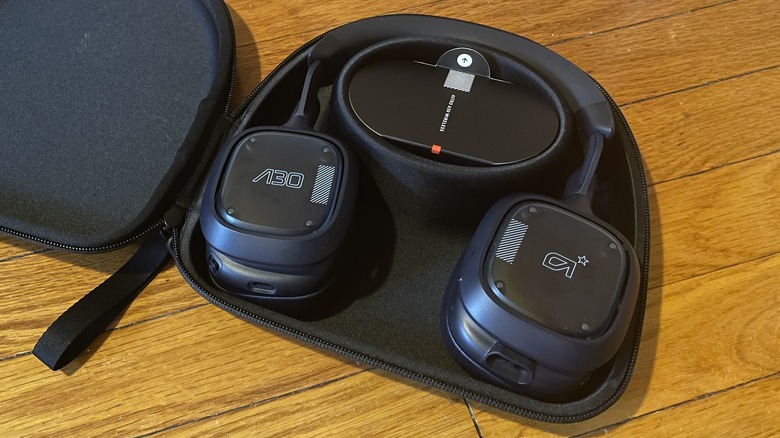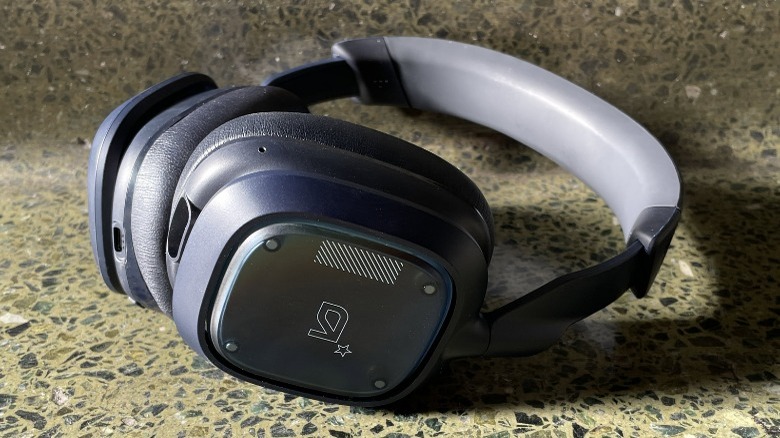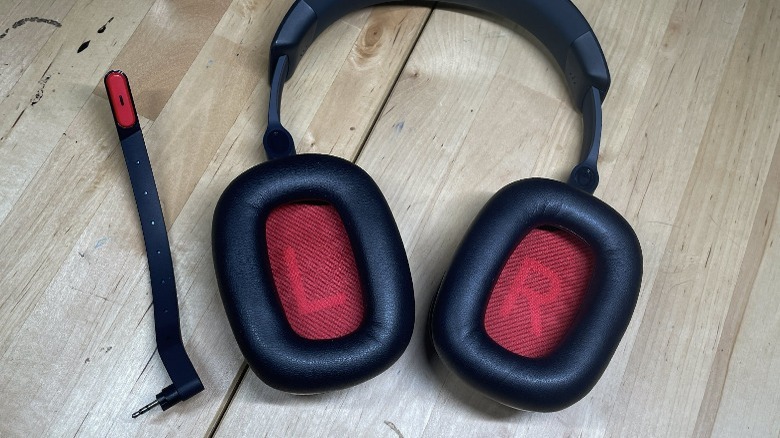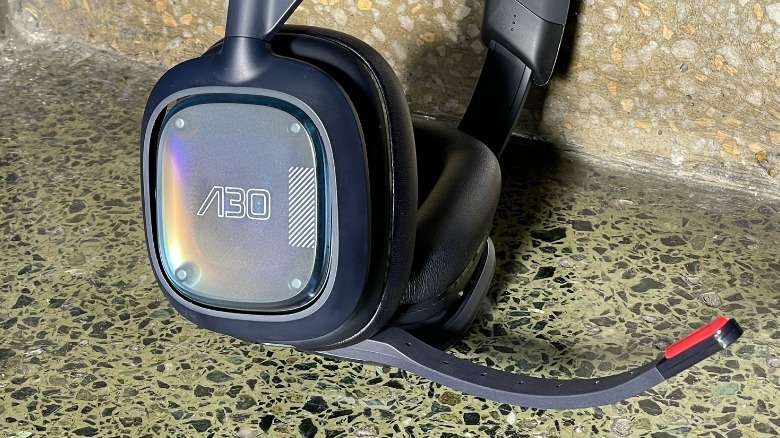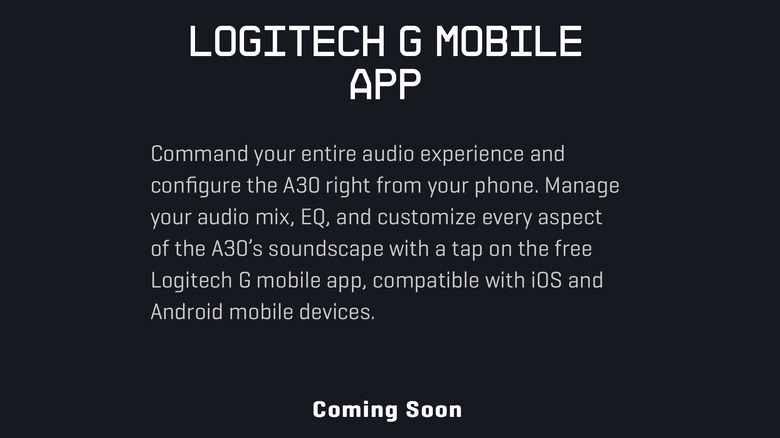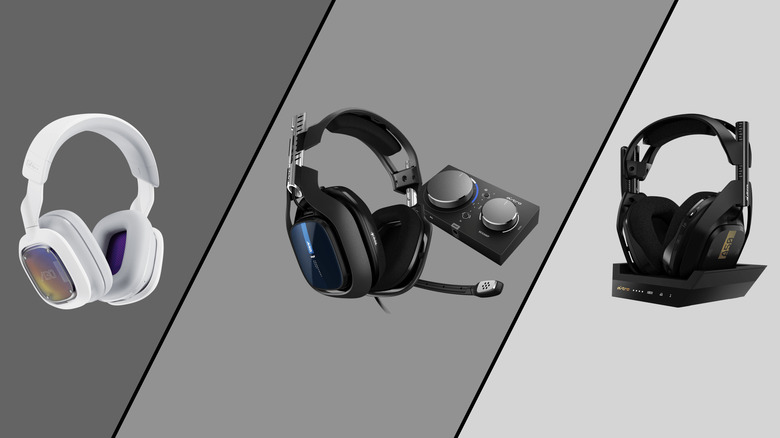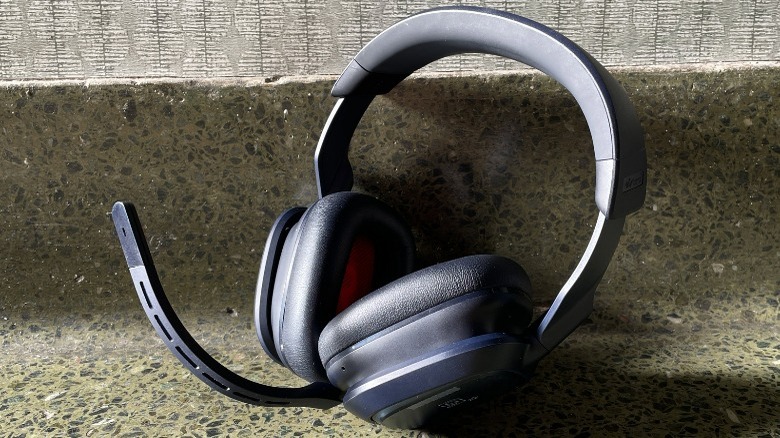Logitech G Astro A30 Wireless Gaming Headset Review: The Biggest Problem Is Timing
- Easy to set up and connect to any compatible device
- Buttons for volume, microphone, and pause/resume play
- Comfortable for extended wear, even with glasses
- Long-lasting battery
- Keeps a solid signal even in separate rooms
- Switching back-and-forth between devices becomes tedious
- In-box paperwork only includes basic setup instructions
I'll admit up front that my experience with wireless headphones — much less headsets that cost over $50 — is limited, so I can't give you an in-depth explanation of how the Logitech A30 stacks up against, say, Sony's WH-1000XM5 model. But what I can tell you is that in the week or so that I've been using the A30s, I've gone from being ambivalent to using headphones in my day-to-day, to using them at almost every opportunity.
Some of the issues I've come across can be attributed to my inability to access the Logitech G HUB mobile app, I'm sure. The same goes for my initial problem with figuring out the various functions that are built into the headset — because the included QR code doesn't work yet. My assumption is that these are very circumstantial annoyances that you likely won't be dealing with once the A30 officially releases. Still, though, there have been some stumbles along the way.
All that said, I have enjoyed my time with them. A lot more than I originally expected to.
Logitech provided SlashGear with a pair of the Logitech Astro A30 headphones for this review.
First Impressions
Taking the A30 out of the box for the first time was a pleasant enough experience. The headphones come packaged in their own zip-up carrying case, with all the cables, the dongle, and the microphone neatly tucked into a dedicated spot underneath the headband. Some additional documentation (specifically the warning sheet and a visual quick start guide) is also included in the box.
The quick start guide is fine for what it is and will be useful for anyone who may not be familiar with pairing a Bluetooth headset to any of their devices — but the problem is that's all the help you get. As I mentioned before there's a QR code included that'll eventually connect to either a more in-depth user guide, the Logitech G HUB mobile app, or both, but as of writing, it only connects to a 404 Error page.
This lack of proper instruction meant having to figure out the particulars of the A30 through trial and error. Which was a bit annoying, honestly. Once I figured out the nuances it was a breeze to use more of their functions, but it was more of a pain to get there than should be necessary. There's a fair chance you won't have to deal with these growing pains once the A30 is released to retail, but we shall see.
Headphone control and sound
I'm sure some of the aspects I've been enjoying about the A30 aren't exclusive to these particular headphones, but as I said, there's a lot of stuff I like here. For starters, pairing them with my Mac, iPhone, or Switch has been pretty straightforward. And when I predominantly use one device over all the others it's even simpler to just turn the A30 on, wait for the tone that lets me know they're connected, then start watching or playing whatever it is I want.
Getting the A30 hooked up to the PlayStation 4 was also very easy, but there was a bit of a hold-up at first due to me not knowing the PS4 doesn't support Bluetooth audio devices — instead, I had to use the A30's included USB dongle. Once I figured out the problem, the rest of the PS4 setup was a breeze.
Being able to directly control the headset volume — by clicking the main function button (which can pause and unpause music or videos from the headset itself) — has been very nice since my different devices tend to default to different audio levels. I've also thoroughly enjoyed being able to leave a video running on my MacBook and still hearing it when I leave the room — and the connection stayed perfectly solid from opposite ends of our apartment, even through walls.
I've also only had to charge the headset once in the past five days (aside from first charging it out of the box), though admittedly I haven't been using them consistently for hours upon hours every single day. But they did outlast my Switch when I was playing "Return to Monkey Island" for an entire evening, and then some.
Comfort and wearability
Something that I think most glasses wearers can relate to is how painful it can be to wear anything that causes your ears to press against those stems for an extended period of time. That was definitely a concern for me when I wanted to see how long I could keep the A30 on my head before things became uncomfortable. But even after several hours of use (again, because of "Return to Monkey Island") while keeping my glasses on, my ears never started to hurt. They may have gotten a little warm due to the memory foam and the fact that NYC was a sauna for a couple of days, but I never felt that familiar aching strain on my ears or just behind my temples that I'd normally feel with a lesser set of headphones.
That physical comfort applies to the sound as well, which comes across as deep and clear (once you figure out how to adjust the headset volume). There are subtle notes and effects that I never knew existed in some of the music I tested out because I'm so used to hearing it all on my MacBook speakers. And if you expect to use them for phone calls, the A30 is pretty clear with that, too.
No mobile app, yet
Aside from the inadequate out-of-the-box help (likely due to the proper web page not being set up yet because the A30 isn't out until October 2022), my only real problem with these headphones is the reliance on a partner mobile app. To be clear, my issue isn't with the use of the app, but rather the tying of some fairly interesting (and some arguably important) features to it — and it's not available. This means if the app ever goes away at some point in the future, or stops working due to a glitch, there are some things you just won't be able to do.
A big talking point of the A30 is multi-device connectivity and sound mixing, which Logitech says allows you to have more than one device providing sound at the same time, and you have control over the independent volume of all of them. It's a cool idea, allowing you to play a game and listen to the audio, while also playing music from a separate source (as just one example), but without the app, I can't actually test that feature out.
Another irritation is having to manually pair the A30 every time I want to change devices. They all remember the A30's previous connection, but the headset always defaults to automatically connect to the last device it was used with — so if I want to jump from my MacBook to the Switch, I have to go into the Switch's Bluetooth devices menu and select the A30 to get it to work. Then if I want to go back to my MacBook, I have to open the Bluetooth system menu and manually select the A30 again. It's kind of tedious, but I think the mobile app is supposed to manage this issue. At least I hope it does.
Versus the rest
While I don't have first-hand experience with a vast assortment of modern headsets, I do know how the A30s stack up to other Logitech headphones on paper. Price-wise, at $229.99 it's snuggled comfortably just below the $250 A40 (with MixAmp) and the $300 A50. Like those slightly more expensive models, the A30 supports Dolby Atmos, but it doesn't support Dolby Surround as the A40 does.
Conversely, despite the somewhat lower price tag, the A30 does offer a physical range that's about 15 feet larger than the A50, and it boasts almost twice the overall battery life. The A30 also supports a larger variety of devices (PC, Mac, Xbox, PlayStation, iOS, and Android) than either of the more expensive models, it weighs less, and it's the only one of the three that supports Bluetooth wireless (or wired) cross-mixing.
Really the only advantage (on paper) that the A40 and A50 have over the A30 is that they're compatible with Logitech's customizable mod kits. But that's kind of a moot point anyway since the A30 does offer two colors (white and black — I was sent black), and has swappable speaker tags you can easily pop in and out that are held in place with a series of small magnets. Ultimately there could be some aspects to the other headsets that I'm unaware of, but I feel like if all you're looking for is a good pair of wireless Logitech headphones that cost less than $250, the A30 is probably the way to go.
Wrap-up
The Logitech G Astro A30 Wireless Gaming Headset is a solid pair of wireless headphones that I've thoroughly enjoyed using. Most of my complaints stem from this being a prerelease review, which has prevented me from being able to access the digital assets that one would hope will be up and running by the time they hit retail. So assuming things work as intended on launch, those problems should all disappear.
I can't say that I'd have been comfortable paying $230 for them personally, but that's got more to do with my perceptions of the importance of a good pair of headphones and where my electronics spending priorities are. Taking my personal hang-ups out of the equation, I do believe they are a worthwhile purchase if you're looking for a new wireless headset. They look good, sound good, work well, and most importantly (at least I think), are comfortable to wear for an extended period of time. And thanks to that ridiculous battery, it's a very extended period of time indeed.
